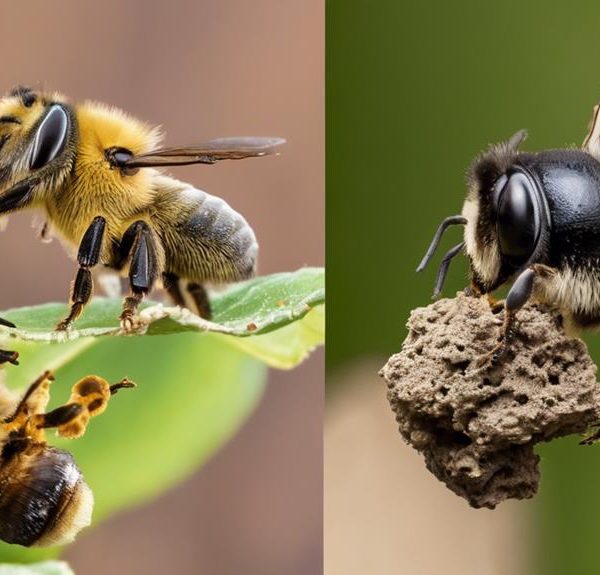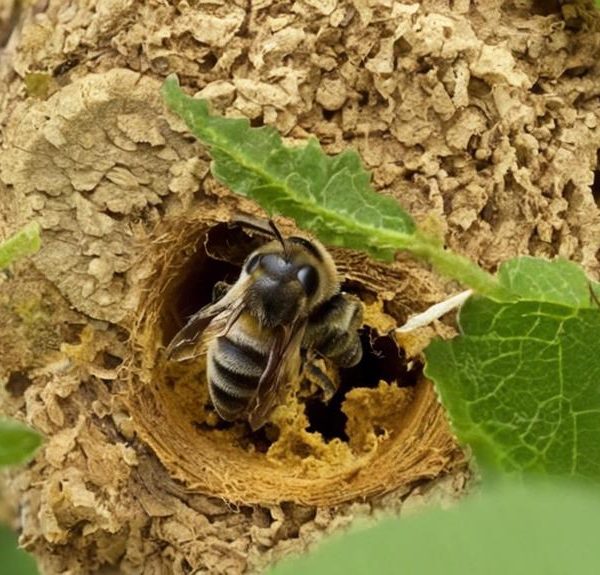Follow us on a scientific journey to uncover the intricate hatching timeline of leafcutter bees, revealing their fascinating relationship with the environment.
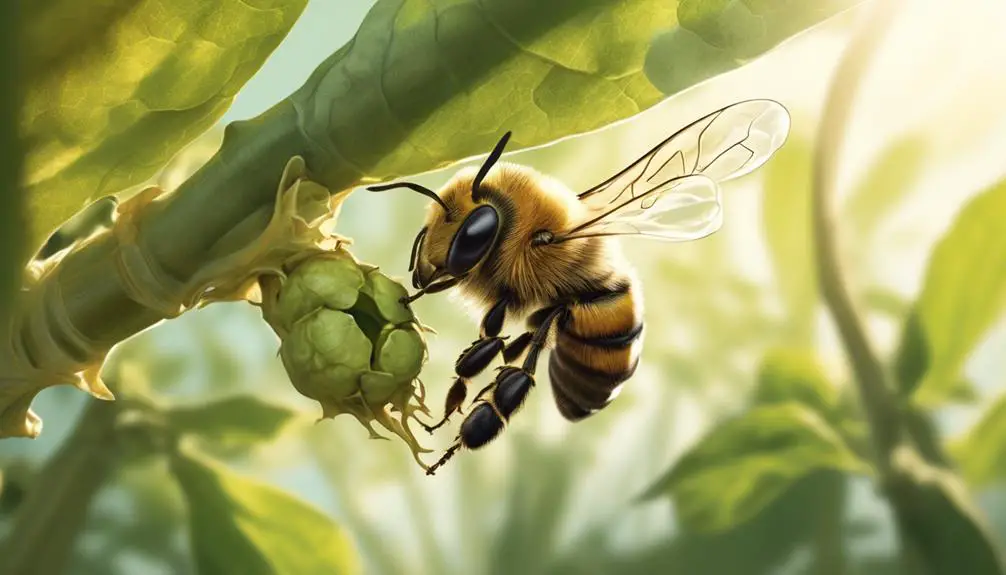
How Long Does It Take Leafcutter Bees to Hatch
You may not be aware, but the fascinating lifecycle of the leafcutter bee, a solitary bee species, is a captivating topic for nature enthusiasts and scientists alike. Unlike honey bees, leafcutter bees are not social insects and they have a unique hatching process that's tied intricately to their environment and seasonal changes.
How long does it take for these intriguing creatures to hatch from their leaf-wrapped nurseries? There's more to that question than you'd think, and the answers reveal much about the complex relationship between these bees and the world around them.
So, are you ready to explore the science behind the hatching timeline of leafcutter bees?
Key Takeaways
- Leafcutter bees go through several stages: egg, larva, pupa, adult bee, with each stage marked by unique physiological changes.
- Temperature is a crucial factor affecting hatching time, with warmer temperatures accelerating development and colder temperatures slowing it down.
- Factors such as nutrition, genetic makeup, and temperature interact to determine the hatching time of leafcutter bees.
- Leafcutter bees have nesting habits where female bees line their nest site with leaf fragments, each containing a single egg on a provision of pollen and nectar. Nesting in separate cells minimizes disease spread and provides natural insulation for the eggs.
Understanding the Leafcutter Bee Lifecycle
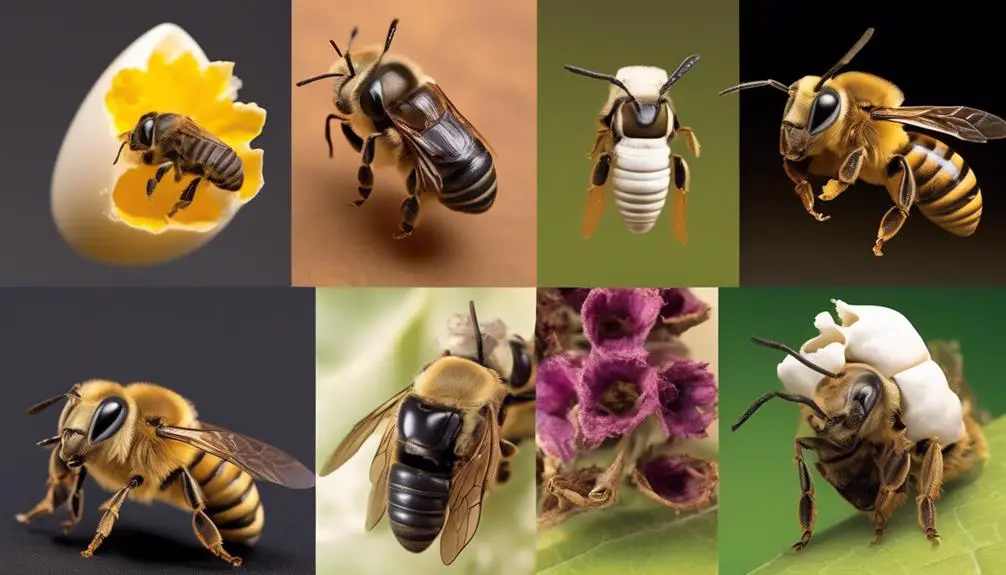
To fully comprehend the lifecycle of a leafcutter bee, one must delve into the intricate stages that this industrious insect passes through, beginning from a tiny egg, transitioning into a larva, then a pupa, and finally emerging as a fully developed adult bee.
You'd be fascinated to learn that each phase in this bee's life is marked by a unique set of physiological changes, supported by a well-defined timeline.
Once a female leafcutter bee lays her eggs in a prepared nesting cavity, the eggs take about a week to hatch. This hatching period is crucial as it sets the pace for the next stage of larval development. As a larva, the bee spends most of its time eating and growing, undergoing five instar stages before metamorphosis. It's a laborious process that lasts for approximately two weeks.
The pupal stage follows, a period of intense transformation where the larva morphs into an adult bee, taking up to three weeks. Upon emerging as an adult, the bee's life cycle begins anew.
This cyclical process is a testament to the intricate balance of nature, revealing the leafcutter bee's vital role in our ecosystem.
Factors Influencing Leafcutter Bee Hatch Time
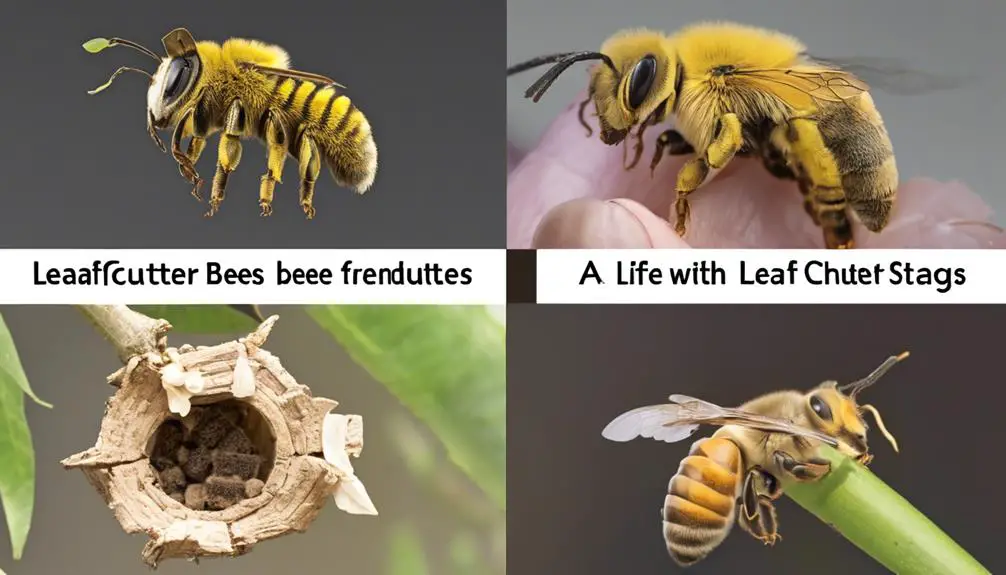
While the general timeline for a leafcutter bee's hatching is about a week, you'll find that various factors can influence this timeframe.
The most crucial of these factors is temperature. Leafcutter bees, like other insects, are ectothermic. This means their body temperature, and consequently their metabolic rate, is dependent on the ambient temperature. In warmer conditions, development from egg to adult can be accelerated, with the larvae growing more quickly. Conversely, in colder temperatures, the development process slows down considerably.
Another critical factor is nutrition. The quality and quantity of food available to leafcutter larvae can impact their development speed. A leafcutter bee larva feeds on a mixture of plant matter and bee saliva, known as bee bread. A higher quality or greater quantity of this food can lead to quicker growth.
Lastly, the bee's genetic makeup can also influence the hatching time. Just as in humans, certain genes control growth rates. Some leafcutter bees may be genetically predisposed to develop more quickly or slowly than others.
Leafcutter Bee Nesting Habits

Delving into the world of leafcutter bees, one can't overlook their unique nesting habits, which are intricately linked to their survival and propagation. Unlike many bee species, leafcutter bees are solitary and nest in a variety of locations, such as hollow stems or old beetle burrows.
You'll find that the female bee is quite industrious. She lines her chosen nest site with leaf fragments, which she meticulously cuts using her powerful jaws. Within this leafy abode, she lays a single egg on a provision of pollen and nectar, creating a cell. This process is repeated until the nest is full, each egg sealed in its own leafy chamber.
The nesting habit of leafcutters is a fascinating adaptation. By laying eggs in separate cells, they minimize the risk of diseases spreading throughout the nest. Moreover, the leaf fragments provide a form of natural insulation, protecting the eggs from temperature fluctuations.
However, nesting success isn't guaranteed. Predators, parasites, and adverse weather conditions pose threats. Yet, understanding these nesting habits provides insight into the life cycle of leafcutter bees and could help in their conservation, as their role in pollination is vital.
The Leafcutter Bee Hatching Process
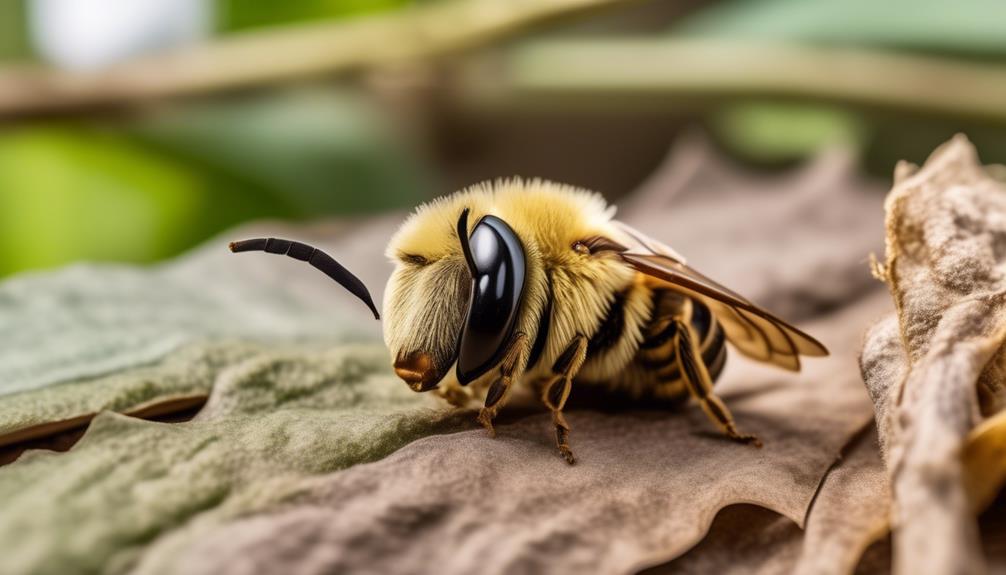
Upon the completion of the nesting process, the fascinating journey of leafcutter bee's hatching commences, a crucial phase that's as intricate and vital as their nesting habits. You'll find that the female leafcutter bee meticulously lays each egg on a pollen loaf, which serves as a food source for the larva once it hatches.
The hatching process, however, doesn't happen overnight. It relies heavily on temperature, so it varies greatly due to climatic conditions. In optimal conditions, you'll observe that the eggs take approximately 14 days to hatch into larva. The larvae will then feast on the pollen loaf until they've grown enough to spin a cocoon, undergoing a metamorphosis to become pupae. This stage typically lasts for about 10 days.
The pupae stage is where the transformation into adult leafcutter bees truly begins. It's during this phase that the bee's wings, legs, and other adult features start to form. Once fully developed, the adult leafcutter bee breaks free from the cocoon, marking the end of the hatching process. Surprisingly, this entire process from egg to adult bee can take anywhere from 20 to 40 days, depending on environmental factors.
Impacts of Climate on Leafcutter Bee Hatching
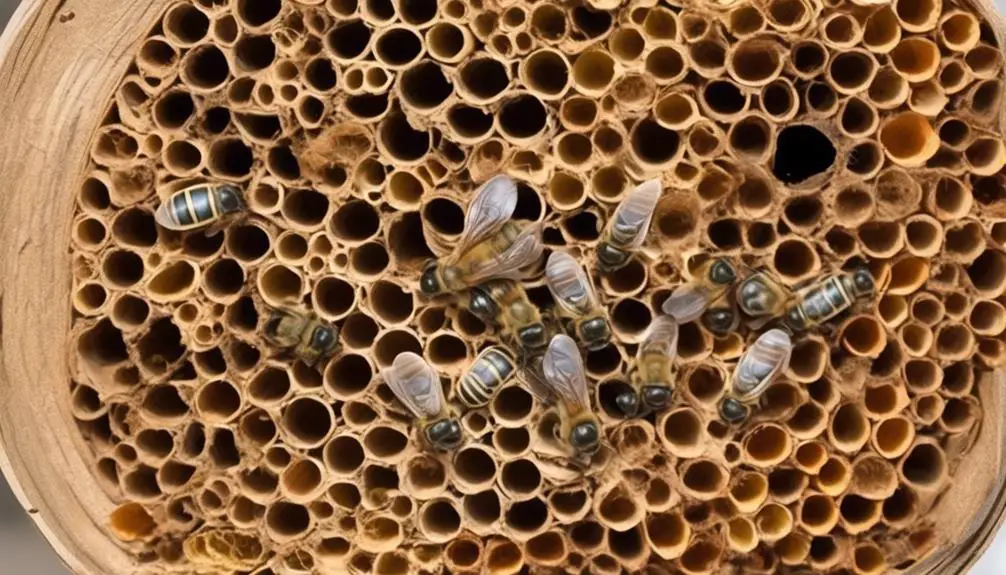
As we've established, the hatching process of leafcutter bees hinges significantly on temperature, highlighting the profound influence of climatic conditions on this crucial lifecycle stage. If the environment becomes too hot or too cold, it can adversely affect the bee's hatching rate, potentially leading to population decline.
Now, let's delve deeper into how these climatic parameters can impact the development of leafcutter bees. For instance, in regions experiencing a rise in temperature due to global warming, the hatching phase might accelerate. This could disrupt the synchronized emergence of bees, leading to an imbalance in the ecosystem.
Conversely, in colder climates, the hatching process may prolong, possibly extending beyond the optimal period for the bees to collect leaf fragments for nest creation. This delay can lead to a subsequent reduction in their reproductive success, thereby affecting the overall population.
Furthermore, seasonal shifts, erratic weather patterns, and sudden climatic changes can induce stress in these bees, possibly disrupting their metabolic processes and affecting their survival.
Conclusion
In conclusion, Leafcutter bee hatching takes a matter of weeks, influenced by various factors including climate and nesting habits. Understanding these factors allows for better conservation efforts.
Climate changes pose significant threats to their lifecycle. By studying their hatching process, you can contribute to their survival and benefit the environment, given their crucial role in pollination.
Remember, every detail counts in scientific analysis and even small changes can impact the Leafcutter bees' hatching process.

